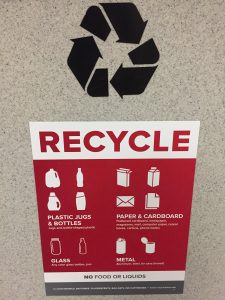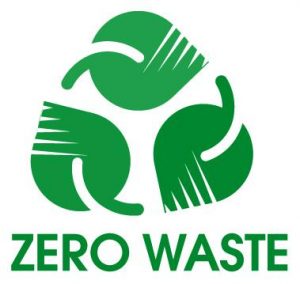My issue is waste disposal, so I am attempting to figure out the root cause of why people do not recycle or compost waste that is eligible to be recycled or composted. Depending on the communities or demographics of a community, there are different barriers that people need to overcome to be able to recycle. For recycling, the root causes are lack of accessibility to recycling utensils, lack of convenience to recycle, lack of time to clean recyclables and take them to a recycling center, forgetfulness, cost, people do not know what to recycle, people do not think recycling makes a difference, people do not think it is important, and people do not understand recycling’s environmental benefit. People do not see immediate consequences of failing to recycle, so they do not make an association between their wasteful habits and the harm they bring to the environment.
The root causes of people failing to compost are ignorance on how composting works, limited amounts of outdoor space, cost of composting equipment, animal pests in compost, “unpleasant smell” of the compost, and not enough time. The big issue is that composting has yet to catch people’s attention as recycling has already done. Most people are unaware of what it is or how to do it.
The root cause that people do not like the costs of recycling is challenging to address because people like to look at the immediate costs of recycling rather than the long-term cost on the environment if you do not recycle. It is hard to change people’s behavior of preferring immediate rather than long-term results. It is challenging to address the issue of not knowing what can be recycled because the policies change from community to community. People may not want to take the extra step to figure out the recycling policy in every community they travel to. They want to save themselves time and confusion. It is also challenging to address the issue of people not believing that recycling makes a difference. Once people hold a strong attitude about something, it tends to persist, resist change, alter their judgement, and guide their behavior. If someone does not find recycling important and they do not want to believe it is important, then what can be done to convince them otherwise?
The biggest root cause of people failing to compost is being ignorant of what it is and how to do it. It is challenging to address this issue because you need a lot of man power to help spread the word on composting. People must be willing to read what you provide and be willing to act on it. To effectively educate people on compost, you would need to teach people in person. That would be a slow and arduous process to maintain. One would need to dedicate their whole life to speaking about compost all around the United States.
The United States does not have policies that mandate recycling. It has policies about proper landfill waste disposal and it talks about how to recycle and what recycling does. America relies on state or local governments to take care of waste disposal and recycling.
Recycling impacts the Ohio State Community by helping them achieve their goal to have zero waste by 2025. This means that 90% of waste is kept from going to landfills. Ohio State finds it important to provide people with the knowledge and opportunities to recycle and prevent wasteful habits. Ohio State uses cardboard bailers and they recycle fryer oils in addition to providing the campus with recycling bins.
Composting impacts the Ohio State Community through the pulper systems in Kennedy and the Ohio Union and bio-digesters in Scott Dining Hall. Pulper systems create organic pulp from food waste. The organic pulp is sent to Quasar Energy group to use for biomass for waste-to-energy anaerobic digestion. This biomass becomes biogas for electricity and energy. Bio-digesters in Scott Dining Hall use the food waste for biomass that can become greywater effluent. Greywater effluent can be disposed of in municipal water systems. Even though the Ohio State University has excellent resources for composting food waste, it does not provide enough accessibility to composting bins. How can students utilize the compostable nature of Ohio State’s napkins, paper towels, or tissues- as well as other sources of food?
Ohio State’s student organization, Students for Recycling, is addressing the issue of waste disposal. They promote recycling and raise money to assist Ohio State’s Recycling Program. Students for Recycling also educate people on waste disposal and how it affects us.
I watched a TEDx Talk that dealt with composting organic waste to prevent landfill build-up, create energy, and promote agriculture. The video was called “Compost king: Paul Sellew at TEDxBoston”. Biases present in the video include the fact that Sellew, the speaker, has been involved in agriculture his whole life. He wants people to support his livelihood, so he must show all supporting data on his opinion. Sellew also makes a living on building organic recycling businesses. He wants to make money, so he must show how amazing his plan is to save the environment.
I learned that food waste has cost us $180 billion by rotting in landfills and releasing greenhouse gases. Also, when incinerated, waste generates ash that goes to a landfill which, once again, releases greenhouse gases. I learned the importance of separating food waste from other waste so that it can be sent to Paul Sellew’s company’s facility. It can be broken down and turned into biogas and organic fertilizer. This process occurs through an anaerobic digestion system. The biogas produced can be used for electricity and cars. I learned that Germany recycles more than 75% of its organic waste through facilities that are like Mr. Sellew’s.
The video provided a lot of helpful information. It talked about the necessity of returning organic matter back into soil so that agriculture and our ways of living are sustainable. It talked about how the anaerobic digestion system creates clean energy and good fertilizer; this means that composting is very sustainable and good for agriculture and maintaining our energy habits. It was interesting when Paul Sellew talked about how farmland should be treated like a forest. Allowing the land to naturally compost leaves, branches, and pine needles can preserve soil.
“Compost king: Paul Sellew at TEDxBoston”


Works Cited
Composting and Recycling
Recycling | Facilities Operations and Development
The Psychology Behind Why People Don’t Recycle
‘I Want to Compost, but…’
Why No National Recycling Law in the U.S.?













